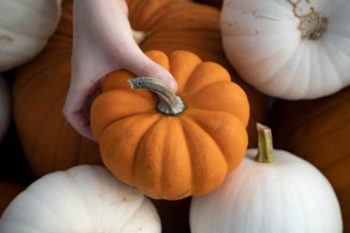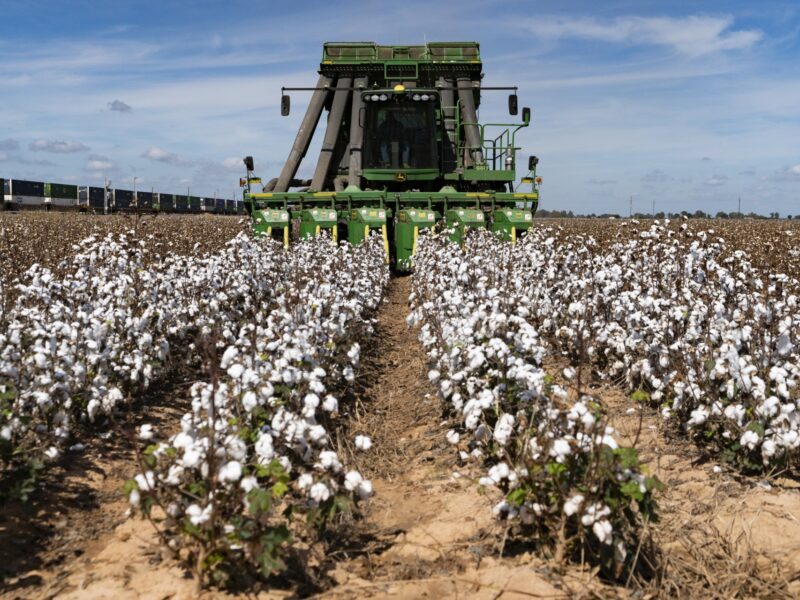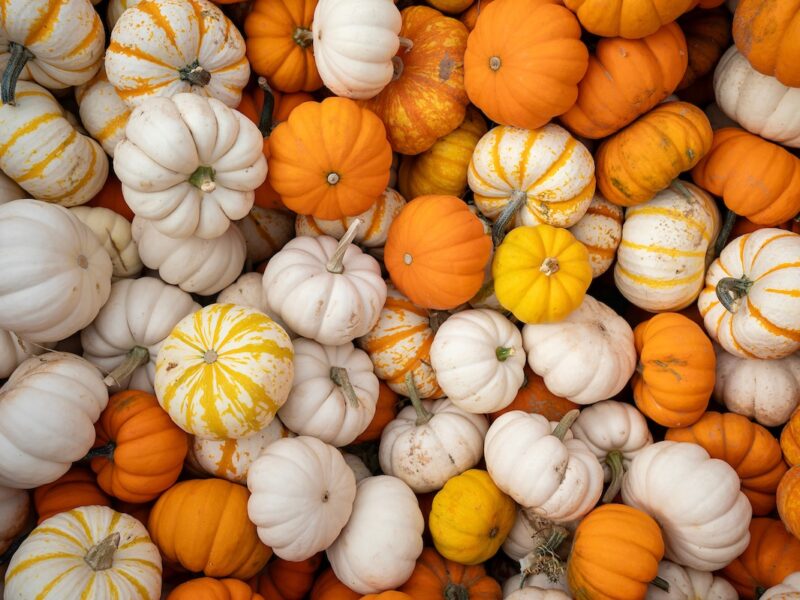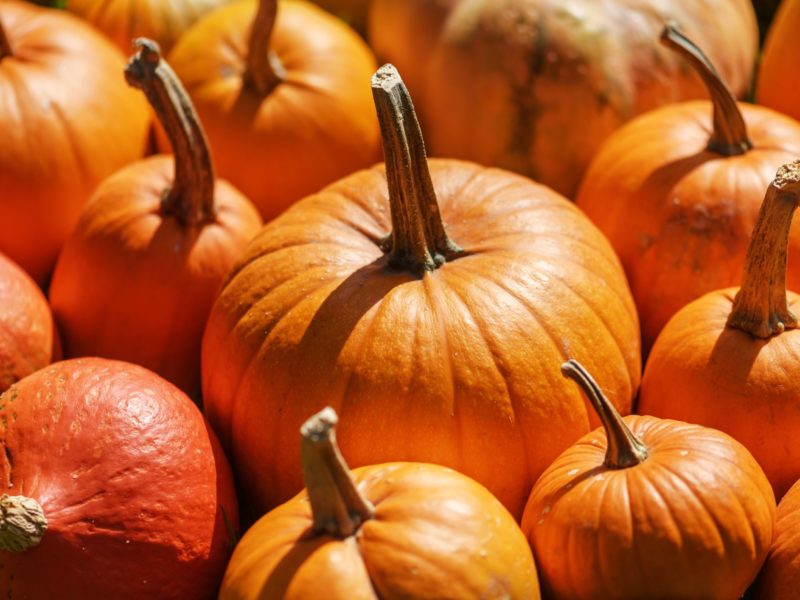Texas Pumpkin Yields Are Down, But Demand Is Sky High

Texas pumpkin producers experienced the second sub-par season in a row, as drought conditions led to fewer management issues, but lower yields, according to Texas A&M AgriLife Extension Service experts. However, lower yields were translating into higher prices and demand.
Mark Carroll, AgriLife Extension agriculture agent, Floyd County, said drought contributed to below average yields, though many fields performed better than 2021 when too much rain led to yields 30% below average. The pumpkin harvest in Floyd County, the top-producing area in the state, should wrap up within the next 10 days, Carroll said.
Producers reported a mixed bag of results due to drought, he said. Some who had ample irrigation capacity improved production by 10-20% compared to last year, while others reported yields 10% below last year.
Boggy conditions made it difficult to impossible for producers to enter fields to manage the crop effectively in 2021, and yields suffered.
“We had virtually no rainfall this summer, so the crop relied entirely on irrigation,” he said. “Getting the crop well established was an issue, but by July most fields looked good because pumpkins do really well in the heat.”
Texas Pumpkin Production
Producers typically plant pumpkins between early May and June depending on the production window for harvest. Operations hoping to provide pumpkins for wholesale markets around the state and country want harvest in early September, while producers hoping to fill direct-to-consumer demand want harvest to begin in late September.
“It all comes down to the market they are hoping to supply,” Carroll said. “Whether that is the wholesale route to grocery stores and other retailers or selling from their storefront, they want them ready for Halloween and fall decorations.”
Most of the state’s few thousand acres of pumpkins are grown in Floyd County around Floydada, a small agricultural town northeast of Lubbock.
Pumpkins represent a small amount of acreage in Texas when it comes to crop production, but Floydada is famous for its pumpkins. Illinois produces around 90% of the nation’s crop, but a handful of Texas growers continue to produce high-demand heirloom and jack-o’-lantern standard varieties.
Their harvest is sold at wholesale and shipped throughout Texas, Oklahoma and as far east as Mississippi. Some producers sell pumpkins and pumpkin-based products directly to consumers at seasonal destination stores.
Producer Perspective
Pumpkin producer Cris Hacker, of Hacker Farms in nearby Knox County, said demand and prices have been better than ever but unfortunately his production was about 50% of what it should be. Last year, his production was down about 40% compared to an average season.
Hacker produces about 20 varieties, including several jack-o’-lantern cultivars, as well as fairy-tale, ghost and Cinderella varieties to meet a mix of commercial and direct-to-consumer demand. He is also a contract grower for large grocery retailers.
Crop emergence was an issue in 50 acres of the 150 acres he planted this year, he said. He planted 100 acres around Memorial Day. Rainfall followed the planting, and plants emerged well. He planted the additional 50 acres two weeks later, and only around 20% of those plants emerged even with irrigation.
Hacker suspects poor pollination was another issue that hurt yields in his fields. He noted a much lower bee presence this season and said daytime temperatures were around 110 degrees during peak pollination.
In previous reports, AgriLife Extension horticulture specialists and plant physiologists said poor plant pollination during extreme heat could impact various crop yields. Pollen viability begins to degrade when temperatures rise beyond the mid-90-degree mark, and bees are less active in extreme heat.
“The plants looked better than ever, healthy and full, but did not put on any fruit,” he said. “There were nowhere near as many bees compared to last year, and I noticed neighbors with irrigated cotton had a similar issue – good looking plants that were not putting on bolls.”
Beyond the poor emergence and potential pollination issues, Hacker said the 2022 season presented fewer production issues compared to the overabundance of moisture last year. But the resulting yields were disappointing amid such good market conditions.
High demand is a result of lackluster production in Texas and other states, including New Mexico and Oklahoma.
“The price is the best it’s ever been, and the demand is incredible,” Hacker said. “Buyers call every day begging for pumpkins because it looks like most everyone’s production is down this season.”
This article by Adam Russell originally appeared on AgriLife Today.





